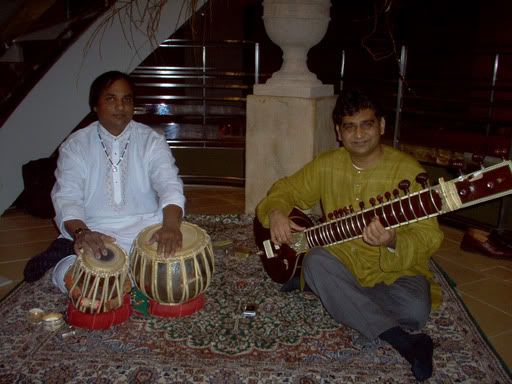
I'm not a fan of gallery openings. They're embarrassing, almost stupid, always invariably pointless. It is about socializing, and I have no interest in socializing. What is socializing, anyway? "The act of meeting for social purposes", being social "living together or enjoying life in communities or organized groups". Sounds like no fun, kind of a sect and its commandings.
If you want to see the art, you'd rather come any other day. If you want to meet the artist, you better be a friend of him or conform yourself with saying "hi, I love your art". Is that what you want? Pretty poor! You don't look at the artworks at an opening, you watch the people ("been seeing... and seeing who else is there"). And for that, bars are more useful, and anonymous (yes, you have to pay $15 for a toast, but I still prefer it). Not to mention the space is typically small, or not enough for the thousands of "social watchers" that gather on a ground floor. Even the biggest gallery in the world, Gagosian Chelsea, can be assaulted and overwhelmed on a Damien Hirst opening night, generating long lines in the street of people trying to make it in (should we expect that this very Friday, new Hirst show right there?)
Anyhow, gallery events are not for me (at least not now); that's why, on the other hand, museum openings are more fun, more relaxed, and I favor them (in the improbable case I'm invited to one). Galleries are open to everybody, therefore crowded and unbearable. Museums are open-for-members-only (and certain members, exclusively), so there's space and many floors and areas to enjoy, not just a ground-floor white cube with no air. Unfortunately, you will have to be a sustaining member or higher to be invited to an opening in the grand museums in New York ($100-membership take you nowhere). Not a problem with the Rubin Museum of Art (of the Himalayas), recently opened in Chelsea and already a success of collections, display, facilities, building and philanthropy. It does not have yet an awful lot of members, so everyone of us was invited to attend.
Interesting how a group of protestors of "Students for Tibet" gathered at the door giving brochures that mark the pieces in the exhibition as "stolen" and the exhibition as being "Chinese propaganda". Mr. Rubin is probably not happy with this, specially since their protests -which apparently will take place every weekend while the exhibition runs- have encountered echo in the press (Artforum.com via The Tibet Times). I think, with the curators at the Rubin, that -despite a sympathy for their protests and activism- their claims on the exhibition are out of focus. This is a unique chance Tibetans in the United States have for seeing and learning their art with actual examples. Tibetan art was and is and will be Tibetan before and after the Chinese invasion. This exhibition is about Tibet, not China, and while condemning the Chinese politics of abuse is necessary, enjoying these artifacts from Tibet in New York is a great pleasure and a lesson of history and art that I will not protest, much on the contrary, I do thank.
As I told the protestors, "I'm gonna have some cocktails while reading the brochure". That I did. The event was highy enjoyable for the silly social thing was confined to the ground level, where the shop and the cafe, and the rest of the upper floors with the collections and exhibitions were open. That gave a lot of space to closely and rather comfortably watch the wonderful Tibetan mandalas and then walk down to have a couple of free wine and Spanish cheese. Das is gut!

But the greatest happening of the night was not the art, not the alcoholic freebies. Meet Ikhlaq Hussain from Pakistan, sitar, and Narendra Budhakar from India, tabla, courtesy of Donald and Shelley Rubin. The musicians were seated on a rug, barefoot, looking small down there. Party plastic-surgery queens were not paying attention to them, and even the noise from the crowd was too loud as to diminish the sound emanating from the two players. But I got powerfully drawn to them, so I made the listening of their heavenly music my almost-exclusive enjoyment. Having listened to Ravi Shankar play with Allah Rakha and Zakir Hussain's masterful tabla-skills, the performance by Ikhlaq Hussain and Narendra Budhakar ranked at a similar level of brilliancy. I've never seen in live musicians playing sitar and tabla- it's thoroughly amazing and awe-inspiring to see those fingers of Ikhlaq Hussain travelling the sitar up and down so fast yet so gently that you cannot catch an eye on them; the delicacy and subtlety of Narendra Budhakar's hands playing the tabla- just a slight movement of the top of the finger produces the sound, the wrist seems to be the player. It goes beyond description.
Ikhlaq Hussain and Narendra Budhakar perform often in the East Coast, and we must be grateful for having such immensely talented and gifted musicians living among us, poor mortals. Their talent is otherworldly, of a mystical and transcendental world.
I'd rather enjoy a trance-inducing five-hour raga by Hussain and Budhakar than going to any gallery opening in New York in the next five centuries.

